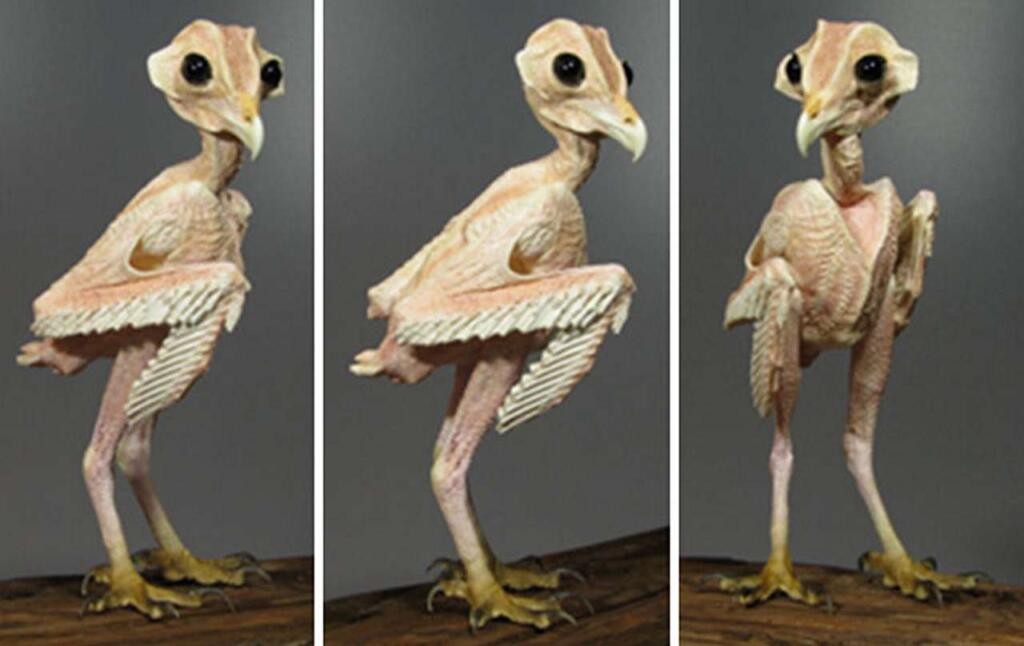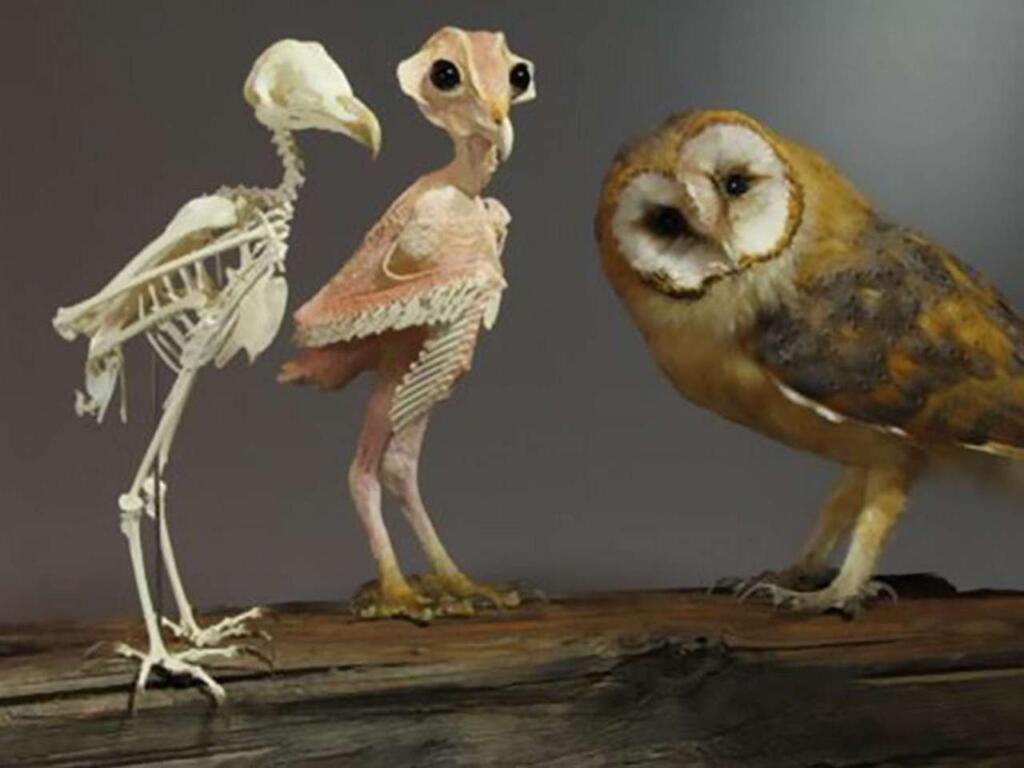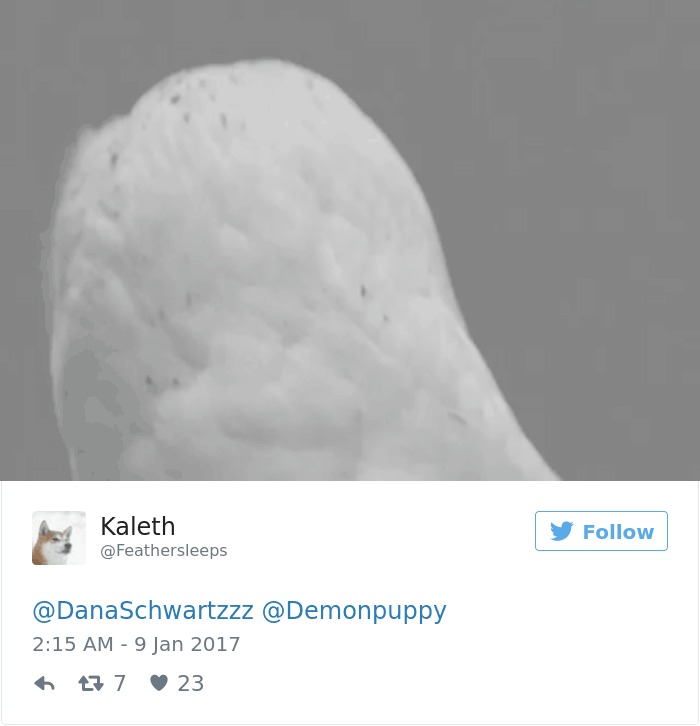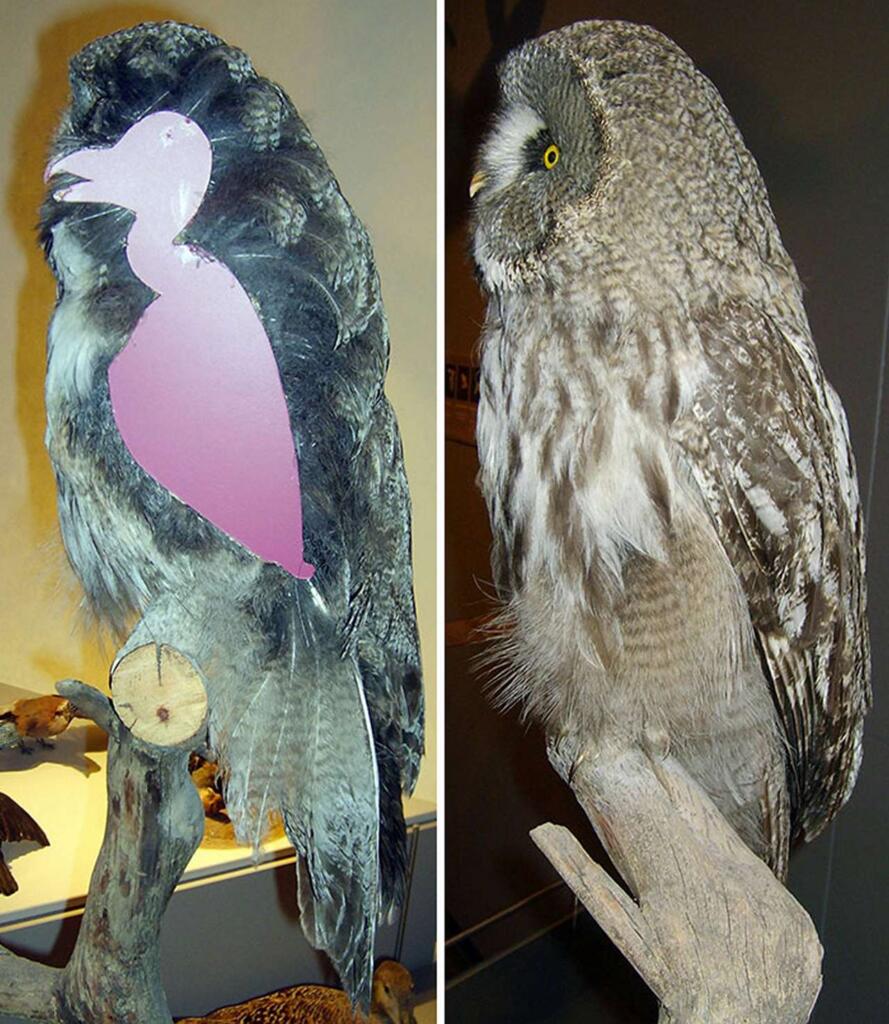In a stunning display of irony, an image of an owl without feathers, known as an owl without feathers, has captured the fascination of social media users, sparking a widespread discussion about the transformative power of feathers on a bird’s appearance.
The picture, shared by Dana Schwartz, provides a rare glimpse into the underlying structure of an owl without its defining feature. This striking image of an owl without feathers, or an owl without feathers, has garnered significant attention, amassing 86K views on Twitter and eliciting a range of reactions from viewers.


Comparisons to dinosaurs and aliens abound, as people grapple with the unfamiliar sight of an owl lacking its usual plumage. Experts have confirmed the authenticity of the image, shedding light on the crucial role that feathers play in shaping a bird’s skeletal structure.
The featherless owl, also known as an owl without feathers, has ignited curiosity and prompted the sharing of images of other hairless creatures, highlighting the transformative nature of feathers in the animal kingdom.
Key Takeaways
- The image of an owl without feathers, or an owl without feathers, has gone viral on social media, sparking fascination and discussion.
- Feathers play a crucial role in shaping avian anatomy, providing support, protection, thermoregulation, and influencing posture and movement.
- The absence of feathers exposes the intricate details of the owl’s skeleton, serving as a thought-provoking reminder of the remarkable adaptations in the animal kingdom.
- The emotional responses to the image varied, with many comparing the naked owl to dinosaurs or aliens, showcasing human curiosity about the appearance of animals without fur or feathers.
What’s underneath feathers?


The image of the naked owl, also known as an owl without feathers, has generated significant fascination as it provides a rare glimpse into the underlying structure of a bird without its feathers, highlighting the profound impact that feathers have on altering the appearance of avian skeletons.
Comparative anatomy between featherless and feathered birds reveals the striking differences in skeletal structure. Feathers play a crucial role in avian adaptation and have evolved over millions of years to serve various functions, including flight, insulation, and courtship displays. Feathers are composed of keratin, a protein found in the outer layer of skin, and are intricately connected to the bird’s skeletal system. They provide support, protection, and aid in thermoregulation.
The absence of feathers exposes the intricate details of the owl’s skeleton, showcasing the delicate and intricate framework that is typically concealed beneath its plumage. This image of an owl without feathers, or an owl without feathers, serves as a reminder of the evolutionary significance of feathers and their transformative effect on avian anatomy.
The impact of feathers
Feathers have a significant influence on the visual appearance of avian skeletons. They not only provide insulation and enable flight, but also play a crucial role in shaping and altering the overall structure of a bird’s skeleton.
This evolutionary significance of feathers can be observed in several ways:
- Feathers act as a protective adaptation, shielding the skeleton from external elements, such as weather conditions and potential injuries.
- The presence of feathers can give the illusion of a larger and more robust skeleton, as they add bulk and volume to the bird’s body.
- Feathers can camouflage and help birds blend into their surroundings, making their skeletons less visible to predators or prey.
- The arrangement and pattern of feathers can influence the posture and positioning of the skeleton, affecting the bird’s balance and movement.
- Feathers can also serve as displays for courtship rituals, influencing mate selection and reproductive success.
Overall, the impact of feathers on avian skeletons is multifaceted and essential for the survival and adaptation of birds in their respective environments.
People’s reactions
One intriguing finding from the viral tweet of the naked owl, also known as an owl without feathers, is that it sparked a trend of sharing pictures of other animals without fur or feathers, demonstrating the widespread curiosity about the appearance of these creatures.
People’s emotional responses to the image varied greatly, with some expressing shock and disbelief, while others found it sad and felt sorry for the bird.

The image of the naked owl, also known as an owl without feathers, was often compared to a dinosaur or an alien, emphasizing its unusual and striking appearance. This comparison highlights the impact that feathers have on the overall perception of an animal’s appearance.
By removing the feathers, the owl’s skeleton became more visible, revealing the extent to which feathers can change the external appearance of a bird.
The fascination with the naked owl’s image showcases the human curiosity and intrigue about the appearance of animals without fur or feathers.
Confirmation from experts

Confirmation from experts regarding the accuracy of the naked owl’s appearance highlights the significance of feathers in altering the external perception of a bird’s skeleton. Feathers play a crucial role in shaping the overall appearance of birds, as they provide insulation, aid in flight, and enable camouflage.
The image of the featherless owl, also known as an owl without feathers, showcases the naked bird’s skeletal structure, revealing a striking contrast to its familiar feathered form. This emphasizes the importance of feathers in not only enhancing the bird’s aesthetic appeal but also in providing functional adaptations for survival.
Feathers are intricately designed to serve various purposes, such as regulating body temperature, enabling flight maneuverability, and facilitating communication through displays. The absence of feathers in the owl’s image serves as a thought-provoking reminder of the remarkable adaptations that exist in the animal kingdom and the crucial role that feathers play in shaping avian anatomy.
Frequently Asked Questions
How do feathers affect the appearance of a bird’s skeleton?
Feathers significantly affect the appearance of a bird’s skeleton. They provide insulation, aid in flight, and have evolutionary significance. Feathers help streamline the body, provide lift, and contribute to the overall structure and biomechanics necessary for efficient flight.
What were some of the reactions people had to the image of the naked owl?
People had various reactions to the image of the naked owl, ranging from shock and disbelief to sadness and sympathy. The image sparked curiosity and led to discussions about the appearance of animals without fur or feathers.
Did experts confirm that the image is an accurate representation of an owl without feathers?
Experts’ opinion and scientific explanation confirm that the image of the naked owl is an accurate representation of an owl without feathers. The image demonstrates how feathers significantly alter the appearance of a bird’s skeleton.
What is underneath feathers on birds?
Birds have a complex anatomical structure beneath their feathers. For example, underneath the feathers, birds have a lightweight skeleton, muscles, organs, and various systems that enable flight and other functionalities. The evolution of feathers and their function has played a crucial role in the success of avian species.
What is the impact of feathers on a bird’s overall appearance?
Feathers have a significant impact on a bird’s overall appearance. They not only provide insulation, flight capabilities, and protection, but also play a crucial role in courtship displays and species recognition. Feathers have evolved for various purposes, highlighting their evolutionary importance in avian



















